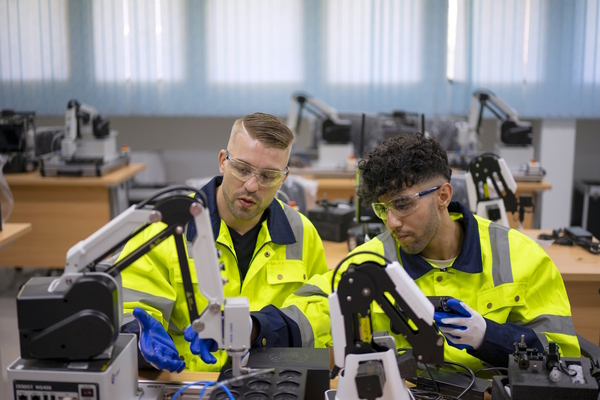Supply chain visibility: hopes, dreams and reality in 2024
Sponsored by OpenTextAchieving desired outcomes from supply chain visibility technology investments requires a shared vision, a clear focus and the tackling of common challenges

If you had to name one characteristic that you desire in a supply chain, what would it be? For many, it would probably be predictability.
But we all know that predictability in supply chains is a fickle thing, and so we are willing to compromise on our wishes. Full predictability may not be an option, but a more realistic desire we often have is full visibility.
We know that problems will arise, but learning about them as soon as possible can help us gain insight into their causes and effects.
Reality isn’t living up to expectation
It’s no wonder that visibility, monitoring, analytics and forecasting tools have been – and continue to be – at the top of the list when it comes to supply chain technology investments. But the results haven’t been great.
According to a study by PwC, 69 per cent of operations and supply chain officers say their supply chain technology investments haven’t delivered the expected results. Another study by Reuters Events found that only 12 per cent of supply chain leaders believe that their investment strategy fully meets the needs of their supply chain.
So, what’s the problem? Why are most organisations feeling underwhelmed by the results they are seeing, and what can be done to improve the situation?
Perception can distort expectations
As a term, supply chain visibility can mean different things to different people. Some see it as being specific to a certain activity within the supply chain, such as shipment tracking, whereas others define visibility as the monitoring of all supply chain processes across multi-tier networks.
Ultimately, each organisation has their own challenges and priorities that ground the conversation around visibility on specific areas that are important for their business. Yet, even if you ask two people in different roles in the same organisation what supply chain visibility means for them, they will likely give you different definitions.
When discussing supply chain visibility, this diversity of definitions can lead to misalignment between expectations and what is realistically achievable in a given situation.
However, there are still some common challenges across the different types of supply chain visibility use cases.
Common challenges around supply chain visibility
The first challenge is the availability of data. While digitisation has come a long way, there are still substantial gaps in capturing structured data on different supply chain processes. This means that the data that is available only partially covers real-world supply chain activities.
The second challenge faced by most companies is access to data. Even when processes are digitised and data is available for analytics, it may only be accessible for a specific function. For example, if the data from a logistics control tower is only available to the logistics team and not to procurement, sourcing, planning or customer fulfilment, these other teams may have gaps in their understanding of what is really going on in the business.
Finally, even when data is both available and accessible, companies often have challenges around the quality of data. Traditional analytics based on incorrect data is counterproductive, but proliferating the use of incorrect data through AI algorithms can be downright catastrophic to the business. Therefore, the more advanced capabilities an organisation is looking for, the more important data management, quality control and governance capabilities become.
Addressing the challenges requires focus on the outcomes
Study after study tells us that companies understand the value of supply chain visibility and are investing in tools to improve it. However, addressing the challenges around availability, accessibility and quality of data will be the key to achieving their goals.
Technology is important, but as with any investments, clear definitions of scope and quantifying the impacts of technology investments on supply chain operations will help guide the path forward. Without a clear focus, supply chain visibility projects can lead to confusion between stakeholders and outcomes falling far short of expectations.
To read more about supply chain visibility and how to succeed with supply chain digitisation, visit OpenText
By Ville Parkkinen, Director, Product Marketing, OpenText Business Network

Business Reporter Team
Most Viewed
Winston House, 3rd Floor, Units 306-309, 2-4 Dollis Park, London, N3 1HF
23-29 Hendon Lane, London, N3 1RT
020 8349 4363
© 2025, Lyonsdown Limited. Business Reporter® is a registered trademark of Lyonsdown Ltd. VAT registration number: 830519543




